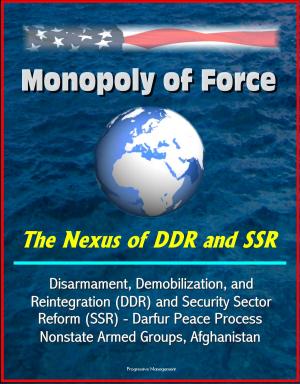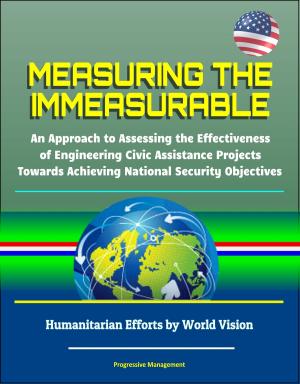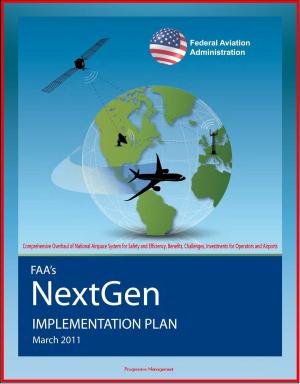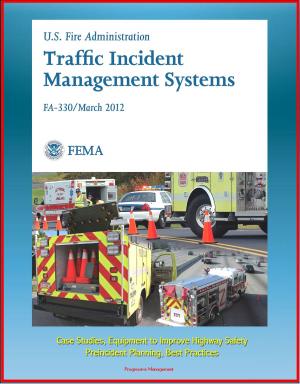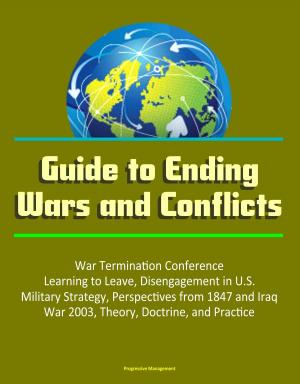Guide for Explosion and Bombing Scene Investigation, Emergency Responder Guidelines: DOJ Guides for Law Enforcement, Fire Service, EMS, Investigators, Plus FBI Terrorism Reports
Nonfiction, Social & Cultural Studies, Political Science, Politics, Law Enforcement| Author: | Progressive Management | ISBN: | 9781310694356 |
| Publisher: | Progressive Management | Publication: | November 10, 2013 |
| Imprint: | Smashwords Edition | Language: | English |
| Author: | Progressive Management |
| ISBN: | 9781310694356 |
| Publisher: | Progressive Management |
| Publication: | November 10, 2013 |
| Imprint: | Smashwords Edition |
| Language: | English |
This is an up-to-date compendium of two Department of Justice (DOJ) publications relating to explosion and bombing scenes and other acts of domestic terrorism. These are vital references and superb sources of official information, with practical emergency information and guidance.
GUIDE FOR EXPLOSION AND BOMBING SCENE INVESTIGATION – This guide provides an investigative outline of the tasks that should be considered at every explosion scene. They will ensure that proper procedures are used to locate, identify, collect, and preserve valuable evidence so that it can be examined to produce the most useful and effective information—best practices. This Guide was designed to apply to explosion and bombing scene investigations, from highly complex and visible cases, such as the bombing of the Murrah Federal Building in Oklahoma City, to those that attract less attention and fewer resources but may be just as complex for the investigator. Sections of the guide include: Procuring Equipment and Tools; Prioritizing Initial Response Efforts; Evaluating the Scene; Documenting the Scene; Processing Evidence at the Scene; Completing and Recording the Scene Investigation. It includes sample forms that can be adapted for use as needed: Consent to Search, Access Control Log, Activity Log, Narrative Description, Photographic Log, Evidence Recovery Log, Evidence Control and Chain of Custody.
EMERGENCY RESPONDER GUIDELINES – This document was produced by the Office of Justice Programs, Office for Domestic Preparedness. Public safety agencies must confront the terrible potential of terrorism involving the use of weapons of mass destruction (WMD). A chemical, biological, radiological/nuclear, or explosive/ incendiary attack would pose unprecedented challenges for police, fire, emergency medical service, and emergency management personnel—the nation’s first line of defense. The U.S. Department of Justice (DOJ) Office for Domestic Preparedness (ODP) was established in 1998 to help provide training to first responders across the nation as part of an integrated program that also includes the provision of specialized equipment, exercises, and technical assistance. The objective of those efforts, each of which contributes to the greater whole, is to enhance responder capacity. To help provide America’s response community with a baseline understanding of the training necessary to effectively and safely respond to an act of terrorism involving the use of WMD, the ODP has prepared these Emergency Responder Guidelines. These Guidelines are offered not as definitive or official regulations, but rather as the informed advice of subject-matter experts from both the private and public sectors. These Guidelines are intended to be a tool for first responders seeking to improve their training and master their craft, reflecting a step-by-step progression from Awareness through Performance to Planning and Management.
Contents include: First Responder Guidelines; Awareness Level Guidelines; Law Enforcement; Fire Service; Emergency Medical Services; Emergency Management; Public Works; Performance Level Guidelines; Law Enforcement; Fire Service; Emergency Medical Services; Hazardous Materials; Public Works; Planning And Management Level Guidelines; Law Enforcement; Fire Service; Emergency Medical Services; Hazardous Materials; Emergency Management; Public Works; Skilled Support And Specialist Employees; Glossary Of Terms; Training Courses By Offering Agency
This is an up-to-date compendium of two Department of Justice (DOJ) publications relating to explosion and bombing scenes and other acts of domestic terrorism. These are vital references and superb sources of official information, with practical emergency information and guidance.
GUIDE FOR EXPLOSION AND BOMBING SCENE INVESTIGATION – This guide provides an investigative outline of the tasks that should be considered at every explosion scene. They will ensure that proper procedures are used to locate, identify, collect, and preserve valuable evidence so that it can be examined to produce the most useful and effective information—best practices. This Guide was designed to apply to explosion and bombing scene investigations, from highly complex and visible cases, such as the bombing of the Murrah Federal Building in Oklahoma City, to those that attract less attention and fewer resources but may be just as complex for the investigator. Sections of the guide include: Procuring Equipment and Tools; Prioritizing Initial Response Efforts; Evaluating the Scene; Documenting the Scene; Processing Evidence at the Scene; Completing and Recording the Scene Investigation. It includes sample forms that can be adapted for use as needed: Consent to Search, Access Control Log, Activity Log, Narrative Description, Photographic Log, Evidence Recovery Log, Evidence Control and Chain of Custody.
EMERGENCY RESPONDER GUIDELINES – This document was produced by the Office of Justice Programs, Office for Domestic Preparedness. Public safety agencies must confront the terrible potential of terrorism involving the use of weapons of mass destruction (WMD). A chemical, biological, radiological/nuclear, or explosive/ incendiary attack would pose unprecedented challenges for police, fire, emergency medical service, and emergency management personnel—the nation’s first line of defense. The U.S. Department of Justice (DOJ) Office for Domestic Preparedness (ODP) was established in 1998 to help provide training to first responders across the nation as part of an integrated program that also includes the provision of specialized equipment, exercises, and technical assistance. The objective of those efforts, each of which contributes to the greater whole, is to enhance responder capacity. To help provide America’s response community with a baseline understanding of the training necessary to effectively and safely respond to an act of terrorism involving the use of WMD, the ODP has prepared these Emergency Responder Guidelines. These Guidelines are offered not as definitive or official regulations, but rather as the informed advice of subject-matter experts from both the private and public sectors. These Guidelines are intended to be a tool for first responders seeking to improve their training and master their craft, reflecting a step-by-step progression from Awareness through Performance to Planning and Management.
Contents include: First Responder Guidelines; Awareness Level Guidelines; Law Enforcement; Fire Service; Emergency Medical Services; Emergency Management; Public Works; Performance Level Guidelines; Law Enforcement; Fire Service; Emergency Medical Services; Hazardous Materials; Public Works; Planning And Management Level Guidelines; Law Enforcement; Fire Service; Emergency Medical Services; Hazardous Materials; Emergency Management; Public Works; Skilled Support And Specialist Employees; Glossary Of Terms; Training Courses By Offering Agency

